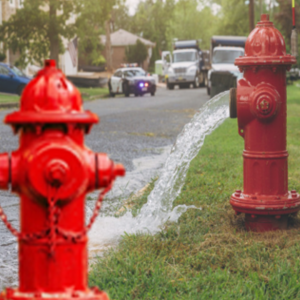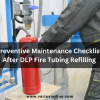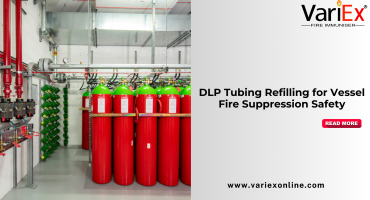![]()
Fire Immuniser
+91-7829629111
Email: info@variex.in
Varistor Technologies Pvt. Ltd.
Block-1, First Floor, Ardente Office One, Hoodi Circle, ITPL Main Road, Bengaluru, Karnataka 560048, IN
What Is Fire Hydrant System
Fire hydrant systems are critical components of fire protection infrastructure designed to provide an immediate and ample supply of water to extinguish fires in urban and suburban areas. Consisting of a network of pipes, valves, and hydrants strategically placed throughout a locality, these systems play a vital role in the rapid containment and suppression of fires, thereby minimizing property damage and safeguarding lives.
 Components of a Fire Hydrant System:
Components of a Fire Hydrant System:
- Water Source: Fire hydrant systems are typically connected to the municipal water supply or other large water sources such as reservoirs or tanks. This ensures a constant and reliable water supply during emergencies.
- Underground Pipes: A network of underground pipes distributes water from the source to various hydrants across the area. These pipes are usually made of durable materials like ductile iron or PVC to withstand high pressure and corrosion.
- Hydrants: Fire hydrants are the visible components of the system and are strategically positioned along streets, sidewalks, or other accessible locations. They consist of a vertical pipe with one or more outlet valves, which are usually covered by a hinged or screw-down cap to protect them from damage and debris.
- Valves: Valves are crucial for controlling the flow of water within the system. They are installed at key points along the pipeline to isolate sections for maintenance or repair, as well as to regulate water pressure and flow rate.
Functioning of a Fire Hydrant System:
During a fire emergency, firefighters connect hoses to the hydrants to access the pressurized water supply. The process typically involves the following steps:
- Locating the Hydrant: Firefighters identify the nearest hydrant to the fire location and remove any obstructions blocking access to it.
- Opening the Hydrant: The cap covering the hydrant outlet is removed using a specialized wrench, exposing the valve.
- Connecting Hoses: Fire hoses are attached to the hydrant's outlet valve, and the valve is then opened to release pressurized water into the hoses.
- Fire Suppression: Firefighters direct the water jets from the hoses onto the flames, effectively extinguishing the fire or containing it until additional resources arrive.
Benefits of Fire Hydrant Systems:
- Rapid Response: Fire hydrant systems provide firefighters with immediate access to water, enabling them to quickly respond to fire emergencies and prevent their escalation.
- Reliability: Municipal water supplies are typically available 24/7, ensuring a constant water source for firefighting operations.
- Coverage: Hydrants are strategically placed to ensure comprehensive coverage of urban and suburban areas, reducing response times and enhancing overall fire protection.
- Cost-Effective: Compared to alternative firefighting methods like water tankers or aerial firefighting, fire hydrant systems offer a cost-effective solution for maintaining fire safety infrastructure.
In conclusion, fire hydrant systems are indispensable assets in urban and suburban environments, providing essential water supply infrastructure for firefighting operations. Their strategic placement, coupled with reliable functionality, helps mitigate the devastating impact of fires on properties and, most importantly, saves lives.
Frequently Asked Questions
A fire hydrant system is a network of pipes, valves, and hydrants designed to provide a readily available water supply for firefighters to extinguish fires in urban and suburban areas.
Fire hydrant systems are connected to a municipal water supply or other large water sources. During a fire emergency, firefighters connect hoses to the hydrants, open the valves, and direct pressurized water onto the flames to extinguish or contain the fire.
Fire hydrants are strategically placed along streets, sidewalks, or other accessible locations in urban and suburban areas to ensure comprehensive coverage and quick access for firefighters during emergencies.
Municipal authorities or utility companies are responsible for the installation, maintenance, and repair of fire hydrant systems to ensure their proper functioning.
Fire hydrants are typically inspected and tested regularly, usually annually, to ensure they are in working condition. Additionally, visual inspections may be conducted more frequently to check for any signs of damage or obstruction.
Final Say
We at VariEx.in or Variexonline.com have mastered the art of designing, installing, inspecting, and fixing automatic sprinkler systems with the help of our in-house team, which is capable of delivering the fire sprinkler services you need, whether large or small and at affordable cost.
To schedule a fire sprinkler installation, or you think our services could benefit your commercial property, contact us online or give us a call at, 7829629111
"WHAT YOU CAN READ NEXT"
 Read more +24 November 2023 in Fire Extinguisher
Read more +24 November 2023 in Fire ExtinguisherWhat types of fire extinguishers are available for different fire classes?
 Read more +11 July 2025 in Fire Suppression
Read more +11 July 2025 in Fire Suppression







Great article! The breakdown of the hydrant fire fighting system components is really informative. It’s amazing how each part, from the hydrants to the control valves, plays a crucial role in ensuring effective fire suppression. Regular maintenance is definitely key to keeping these systems ready for action. Thanks for sharing such detailed insights!
Thank you for your feedback! I’m glad you found the article informative. Your appreciation is greatly valued!